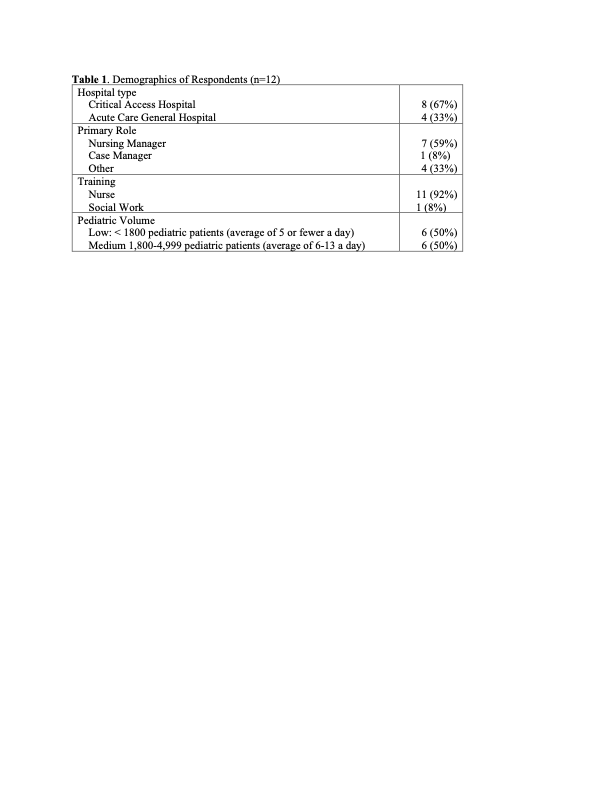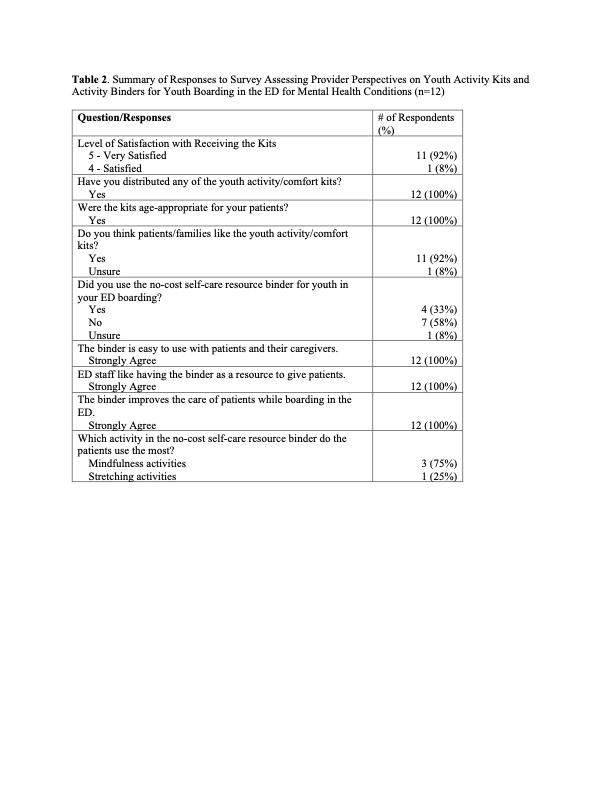Emergency Medicine: All Areas
Emergency Medicine 6
348 - Assessment of a State-Wide Initiative for Children Boarding in Rural Emergency Departments with Mental Health Concerns
Publication Number: 348.21

Christian D. Pulcini, MD, MEd, MPH (he/him/his)
Assistant Professor of Emergency Medicine and Pediatrics
University of Vermont
Burlington, Vermont, United States
Presenting Author(s)
Background: Children presenting to emergency departments (ED) for mental health conditions have been increasing, often resulting in ED boarding. Children are often boarding for several days in rural EDs with no pediatric or psychiatry expertise and limited resources. Recent reports have documented the adverse effects of such practices, including moral distress among ED staff. We implemented a statewide initiative in rural EDs through distribution of 1) youth activity kits, and 2) a self-care resource binder designed to assist staff in caring for children boarding with primary mental health concerns. We distributed a survey to assess the utilization and impact of this resource by ED staff.
Objective: Our objective was to assess the utilization and impact of these resource by ED staff
Design/Methods: The resource was developed by the New England Emergency Medical Services for Children (EMSC) Collaborative with multidisciplinary input. Youth activity kits were offered and distributed throughout Vermont along with self-care activity binders from 6/21 to 9/22. We then distributed an electronic RedCap survey to all EDs in Vermont. The survey was designed in collaboration with state leaders, survey experts, and representation from the New England EMSC Collaborative.
Results:
Twelve of 13 EDs in the state that participated in the program completed the survey (92% response rate). Eight of the 12 EDs were identified as critical access EDs and 4 EDs were identified as acute care general EDs, with all EDs reporting less than 5,000 pediatric visits per year. (Table 1) All hospitals indicated that their staff distributed the youth activity kits, and that they were either satisfied or very satisfied. Ninety-two percent felt the patients and families liked the contents of the kits. In regards to the self-care resource binders, 4 EDs implemented the binder. All agreed the binder was easy to use, easy to distribute to families, and improved the care of children boarding in the ED. (Table 2) The biggest barrier to implementation was the ED staff’s time limitations (44%). Voluntary qualitative comments revealed high support; “These are wonderful! Patients love them and staff love giving them.”
Conclusion(s):
We implemented a novel, two-pronged statewide initiative in rural EDs to provide resources to ED staff for pediatric patients boarding for mental health conditions. We found high acceptability and perceived impact of the initiatives, notably for the youth activity kits. Further assessment is needed to measure the child and family-level impacts of these initiatives. 

